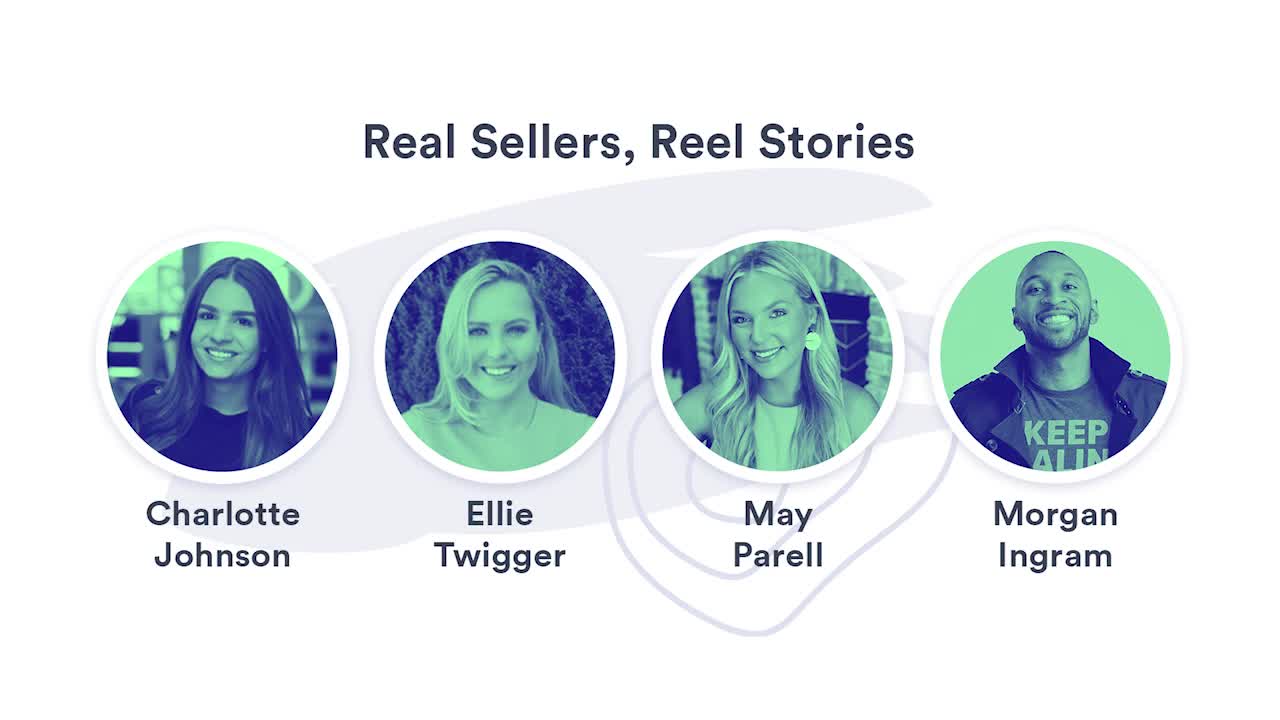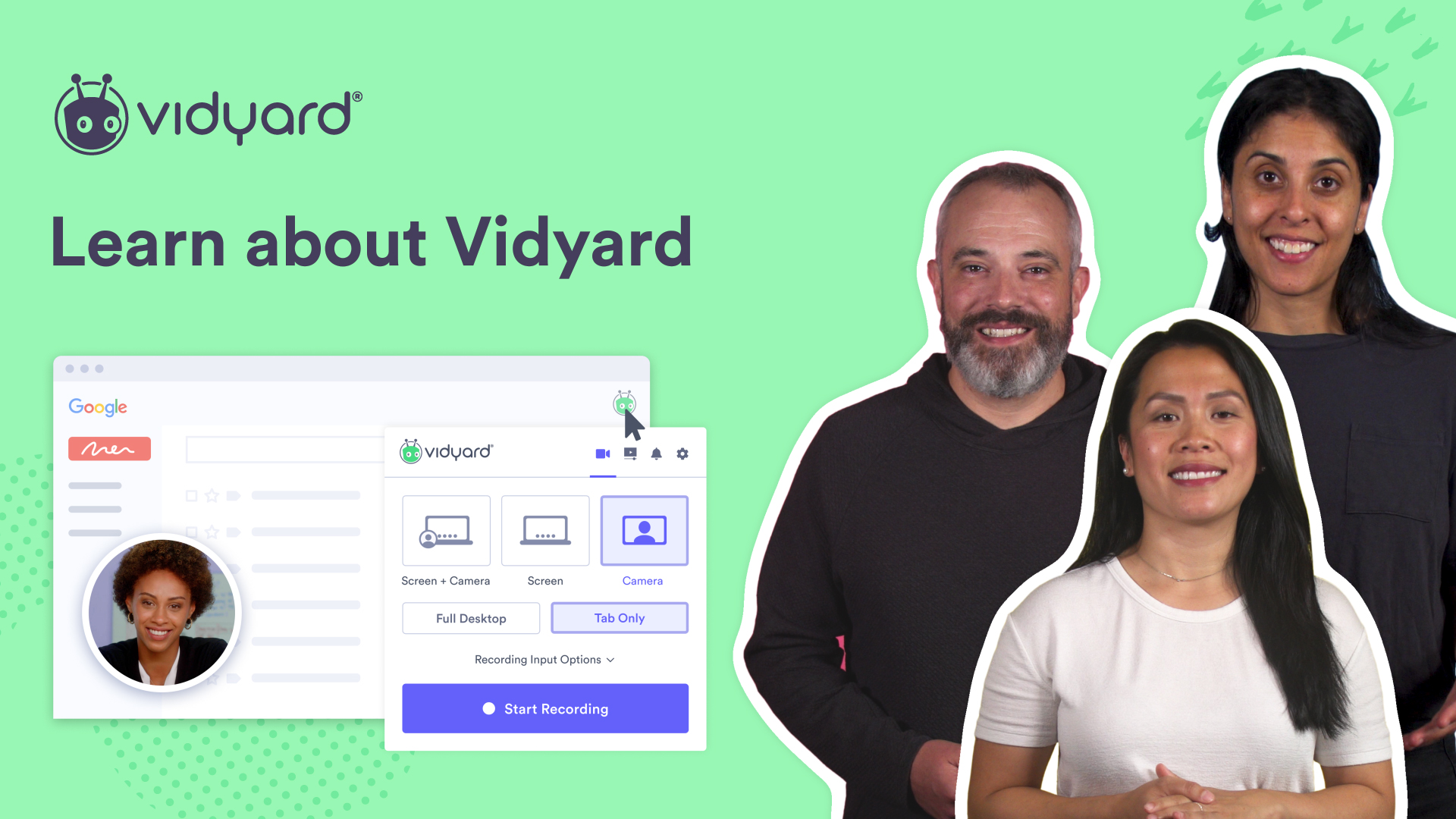There are SO many different types of video you can make for your organization. The possibilities are practically endless, from how-to content to case studies, explainers, and beyond.
Plus, for every different type of video you can make, there are multiple different styles you can approach it from and different orientations you can shoot and share it in.
To achieve the goals you set out in your video marketing strategy, you’ll need a variety of video types to meet different needs. With the right mix, you can guide prospective buyers along their journey from awareness through decision, all with video content.

The Nine Types of Video You Need
1. Explainer Videos
Good for: The early discovery stages of the buyer’s journey. Educating buyers about your product or service and illustrating why they need it, generating leads and nurturing prospective customers.
Explainer videos (sometimes called product explainer videos) are a valuable type of video for explaining complicated products or services and increasing brand awareness. They are typically a high-level look at how the product solves a problem.
Because they’re high-level, explainer videos don’t need to show the actual product or service to be valuable, which means animation is a popular style choice.
40% of companies have already invested in explainer videos, proving they’re a solid shareable content asset. Aim to make them engaging and try to connect with viewers on an emotional level.
You can create overview videos for each vertical or product line you offer. With these, you’re not looking to make a hard sell or pitch. Instead, outline a problem you know your customers have.
Product explainer videos should answer the question “what’s in it for me” from your buyer’s perspective.
Rather than being about Box directly, the video focuses on how a marketer can use Box to solve everyday problems and make their job easier.
By calling out familiar scenarios (like a marketing budget cut) and how their solution helps, this video is all about observable utility and serves as a terrific demo that could be used in follow-up emails to leads who want to see the product in action.
2. How-To Videos
Good for: Easing people from the discovery phase into the real meat of what you deliver.
How-to videos are educational in nature and are one of the most popular types of videos. These videos explain to the viewer how to do something. Step-by-step tutorials can be entertaining as well as informative.
Since question queries are incredibly common in search engines, creating content that addresses them (and optimizing it) is a great way to appear in search results. Unsurprisingly, how-to videos make up 40% of the videos pushed out by customer experience teams.
Consider creating this type of video to answer important customer questions in your industry. You can then use the end of the video to prompt the download of a piece of informative. Or mid-funnel content to help keep your viewer moving through the buyer’s journey.
By becoming the experts who can answer the question clearly in just under a minute, they become the folks people want to do business with.
Jacob Collins, Video Producer at Kapost, explains: “We use video strategically by tying every single video into a campaign, event, or product feature. We shoot only what we need to maximize potential and put time into quality over quantity.”
Their videos include great calls to action prompting the download of another piece of content. This guides people to the next stage of the funnel, where they’ll learn more about the Kapost solution.
3. Promo Videos (a.k.a. Hype or Teaser Videos)
Good for: Brand awareness, increasing traffic to your blog or asset-specific landing pages, and lead generation.
Most companies already have text-based content marketing assets—like reports or guides—to promote, and one of the best ways to make the most of these pieces is with a fun video designed to encourage more downloads.
Promo videos can work well for big events, virtual conferences, paid campaigns, and more.
When brainstorming new content pieces, consider the bigger story you can wrap these up in and the top-of-funnel video you could use as the asset’s promo or commercial, so to speak. Or consider using promo videos for brand awareness across paid and social media channels.

4. Thought Leadership Videos
Good for: Building thought leadership within your industry and establishing expertise on a given topic. Also, educating your audience about a particular subject and making a human connection.
With 20% of companies already invested in thought leadership videos, these videos aim to share a unique perspective to build trust and a following.
These videos need to be authentic and focus on the point of view. Sharing expertise and starting a conversation are key.
A member of the Moz team explains a concept in front of a whiteboard that’s been filled with supporting material. Sometimes the whiteboard includes illustrations, sometimes it’s more of a summary of points.
5. Webinars and Recorded Webinars
Good for: Educating potential customers about issues and trends related to your industry. Also, generate leads to add targeted email lists or guide prospects further along the funnel.
Most companies treat webinars as digital events with virtual attendees who have registered in advance to watch the session (generating a lead for the company).
Webinars prove to be a strong asset as 53% of companies have leveraged synchronous video content through live webinars.
Pre-recorded webinars can be scheduled for a specific date and time like standard webinars. Or they can simply be published on your organization’s website, which could be on a landing page, in a resource hub, or embedded in a blog post.
When planning new webinars, think about how you plan to repurpose them from the get-go. If you want short videos, design your webinar so that the recording can easily be edited into bite-sized video clips. These types of videos can then be used in ongoing content marketing programs.
If you build out topics strategically—mapping each to a particular question a buyer has along their journey with your product, for example—these videos can act as the perfect stepping stone along the buyer’s journey.
Below is an example of a popular on-demand session that was edited from a 25 min to just over 10 min video.

6. Case Study Videos (a.k.a. Customer Stories or Testimonial Videos)
Good for: The justification and evaluation stage of the funnel when buyers are considering whether you solve their specific pain points.
Arguably, case study videos are one of your collection’s most important video types. Many B2B buyers will search for customer testimonials when they visit your website.
Try asking happy customers to record a short testimonial video using their webcam to answer a few basic questions you send them.
Vidyard’s Chrome extension is an easy-to-use free tool that makes it simple for anyone to shoot a simple video of themselves.
A testimonial is the stamp of approval from other businesses. Filming a great one is the perfect way to showcase how your solution solves common customer problems. Testimonial videos stand as a valuable type of video, especially for marketing and customer experience departments. Nearly 50% of the videos created by marketing are testimonial videos, and 30% are created by customer experience.
When developing a testimonial video, never underestimate the power of B-roll, ask leading questions versus the typical Q&A, and always find a way to position your customer as the hero of the story.
In one, an artist explains how he uses Google Street View to paint places worldwide—and how he’s created a community of others passionate about doing the same.
7. Brand and Culture Videos
Good for: Reaching new audiences as well as building brand awareness and affinity.
Brand and culture videos are ones that tell your audience about your brand and what you stand for. Over 50% of companies have already invested in brand videos. And over a quarter of companies are using culture videos to help showcase company culture. They’re an opportunity to have some fun and get creative. Holiday, about us, recruiting, and company culture videos can all fit into this category.
8. Demo Videos
Good for: Helping buyers justify their decision to purchase, email follow-up, lead generation, and addressing the end of the funnel.
Similar to explainer videos, demo videos explain how your product or service works. However, they need to be more detailed about specific features and functions because they come in later in the marketing funnel. Typically, somewhere from the middle toward the end.
Product demo videos show viewers the value of your product rather than just telling them. In industries that sell physical products, this could even include unboxing videos. These types of videos showcase the packaging and product, showing potential customers what to expect.
Your audience should be nodding along in agreement with you at all times. Your goal is to show them you understand their world. Demo videos benefit your customer experience and make up a large chunk of the videos created by sales teams. Even better, they rank as the second most invested type of video, with over half of companies using demo videos.

Your organization’s video library will include an assortment of video content. Start out by choosing a few formats you think work well for your brand and the story you want to tell. Then, test to see how your audience reacts.
Do more of what works. Keep iterating, try new things, and don’t be afraid to mix and match different styles and types to find something that fits your vision—and meets your goals.
9. FAQ Videos
Good for: Saving time for sales and customer support teams by helping buyers self-serv by finding answers to commonly asked questions.
FAQ videos are often found on knowledge base sites or used in customer support conversations to help troubleshoot technical problems to commonly asked questions. An FAQ video known as the “80% video” is growing in popularity and is used in sales discovery to answer the top questions that sales reps get asked eighty percent of the time from prospective customers.
Typically, FAQ videos would be bottom of the funnel. An 80% video would be used more top of the funnel. However, the 80% video can help with deal progression and move prospects beyond discovery.

FAQ or 80% videos benefit prospective customers as they offer frictionless research where they don’t even have to speak to a rep if they’re not ready. Buyers and sellers can spend precious live meeting time following up with more target questions and answers related to the account.

 Find out what types of video your business needs, how to make them, where they fit in the funnel, and more. Get the Guide
Find out what types of video your business needs, how to make them, where they fit in the funnel, and more. Get the Guide This post was originally published on December 3, 2018. It was updated on August 23, 2022.







